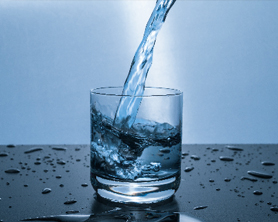
UROLOGY
BPH
Benign prostatic hyperplasia (BPH) is a non-cancerous enlargement of the prostate gland, the prevalence of which gradually increases with age and the presence of male sex hormones. It is one of the most prevalent diseases among men: 80% of those over the age of 50 have some degree of BPH and 95% have BPH by the age of 80. As the gland increases in size, it obstructs the flow of urine in the urethra, which makes it harder for the bladder to pass urine. This gradual increase in size is usually accompanied by emptying symptoms such as intermittent urination, weak flow, decreased urine stream calibre, voiding effort, dripping after urination and delay in urination. These symptoms are in turn usually accompanied by filling symptoms, such as urination frequency, nocturia (increased frequency of urination at night), an urgent need to go the toilet, sudden incontinence and pelvic pain. Over time, the problem gets worse and the bladder often fails to void all the urine, which can lead to urinary tract infections. It is also possible that a malignant growth may develop in the periphery of the prostate. An annual examination is therefore essential in order to detect whether there are any signs of prostate cancer.
There is currently no way of preventing the appearance of BPH or its associated urinary problems. Early diagnosis through a range of tests (physical examination, digital rectal exam, urinalysis, IPSS, ultrasound scan, PSA) is therefore crucial. As far as treatment is concerned, there are now a range of options for treating the illness according to the degree of development of the BPH. With regard to drug treatments, alpha-blockers (to increase bladder capacity) and 5-ARIs (to reduce androgen levels) are the most widely used to treat moderate to severe BPH, and several studies have shown that a combination thereof provides better results than monotherapy.
OAB
Overactive bladder (OAB) syndrome is the most common urinary disorder among women and elderly people. It is characterised by an urgent need to urinate, with or without incontinence, and is often accompanied by nocturia and increased urination frequency. Although not serious, it has a negative impact on patients' quality of life, as it affects their social and sex life, personal relationships and work.
This condition occurs when the muscles of the bladder start to contract involuntarily even when the volume of urine in the bladder is low. This involuntary contraction creates an urgent need to urinate. The origin of this alteration is unknown in the majority of cases (it is idiopathic), although a high intake of liquids, particularly caffeine or alcohol, can be factors that have a bearing on its appearance. It can also be caused by neurological disorders, spinal cord injuries, multiple sclerosis, Parkinson's disease and brain haemorrhages.
The therapeutic strategy followed includes taking up healthy lifestyle habits and strengthening the pelvic floor, as well as the use of available medication (antimuscarinic agents such as Solifenacin, etc.).
ED
Erectile dysfunction (ED) is defined as the persistent inability to achieve or maintain an erection sufficient for satisfactory sexual performance. ED is more prevalent among older males. It affects more than 50% of individuals over the age of 60, its frequency and intensity increasing from that age onwards.
Although ED is a completely benign disorder, it affects the physical and psychosocial health of men who suffer from it and has a significant impact on their quality of life, as well as that of their partners and family.
ED can be organic (physical origin) or psychological (psychological origin). Its treatment consists of a combination of a change in life habits and treatment with medication. First-line treatment is carried out using selective phosphodiesterase type 5 (PDE5) inhibitors, such as tadalafil, etc.

